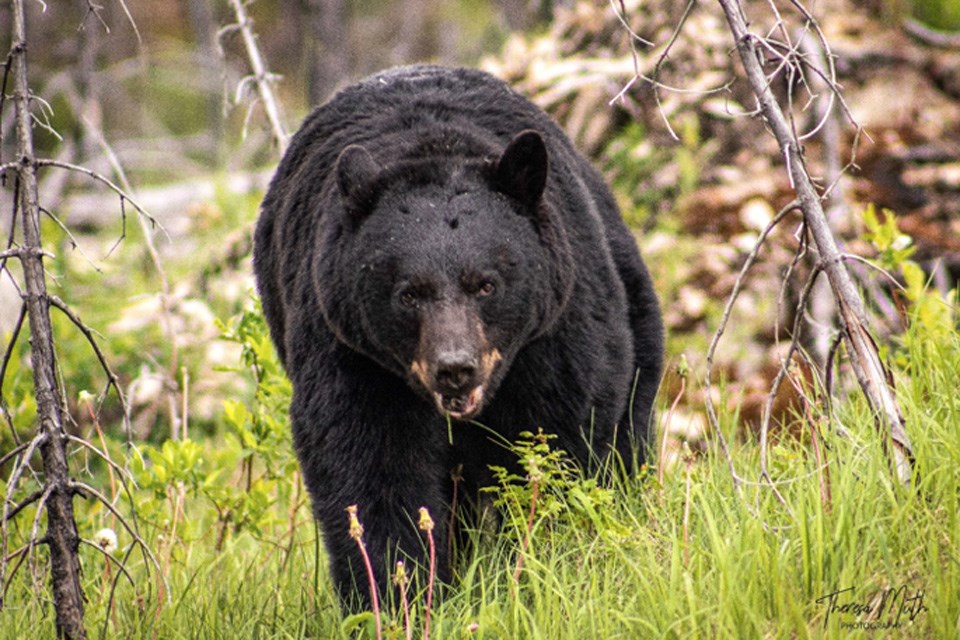Whether you're looking for an exciting adventure or just a peaceful day of wildlife viewing, Alberta has something for everyone.
Here's what you can expect to see in each region:
Rockies
The Rocky Mountains are home to some of Alberta's most iconic wildlife species including grizzly bears, elk, moose, and mountain goats. You may also spot eagles and falcons soaring through the sky.
Canadian Badlands
The badlands offer visitors a unique opportunity to view smaller carnivores such as coyotes, red foxes, lynx, and bobcats. Wolverines can also be found in this region.
Foothills
The foothills provide a great opportunity for spotting elk, moose, and deer as well as golden eagles, snowy owls, and more.
Lakeland
The lakeland region is home to many species of waterfowl including ducks, geese, and swans as well as other birds such as herons and pelicans. You may also spot beavers swimming around in the lakes.
Wood Buffalo National Park
Wood Buffalo National Park is one of the best places in Alberta for spotting large mammals such as bison, wood bison, elk, and wolves. It's also home to many species of birds including bald eagles and peregrine falcons.
Safety First!
When viewing wildlife in Alberta it's important to be safe and respectful at all times. Keep your distance from animals so they don't feel threatened or disturbed by your presence. Never feed wild animals or try to touch them; it could put both you and the animal at risk! Be sure to follow all park regulations when visiting any protected areas in Alberta too.
Taking Photos of Wildlife
It’s natural to want to capture the beauty of the wildlife you see in a photo. However, always be mindful that you are in a wild animal’s habitat; extra precautions and equipment are needed.
Taking good pictures of wildlife from your car can be a rewarding and safe way to capture the beauty of nature.
Here are some tips to help you take stunning photographs while keeping both you and the animals safe:
- Choose the right equipment: A DSLR or mirrorless camera with a telephoto lens (200mm or greater) is ideal for capturing close-up shots of wildlife from a distance.
- Keep a safe distance: Always maintain a safe distance from wildlife to avoid disturbing or stressing the animals. Use your car as a mobile blind and stay within the vehicle, as getting out can disturb the animals and potentially put you in danger. Respect any posted signs about not stopping for wildlife.
- Plan your route: Research wildlife hotspots and plan your route accordingly. National parks, nature reserves, and wildlife sanctuaries are great places to start. Check online forums and local wildlife groups for recent sightings and tips on the best locations.
- Be patient and observant: Wildlife photography requires patience. Once you’ve found a suitable location, park your car in a safe spot and wait for the animals to appear. Keep an eye on their behaviour and look for signs that they may be preparing to move, eat, or engage in other interesting activities.
- Use the right settings: For wildlife photography, use a fast shutter speed (1/500 or faster) to freeze motion and avoid blurry images. Set your camera to continuous shooting mode to capture multiple frames per second, increasing your chances of getting the perfect shot.
- Focus on composition: Look for interesting angles and backgrounds that will enhance your subject. Use the rule of thirds to position the animal in a visually appealing part of the frame. Be mindful of distracting elements and try to keep the background clean and simple.
- Capture natural behavior: The most captivating wildlife photos show animals engaging in natural behaviors. Be patient and wait for the right moment to capture unique and interesting scenes.
- Respect the environment: Do not litter, feed, or disturb wildlife in any way. Follow park rules and regulations, and always leave the area as you found it.
- Practice safety: Ensure that your vehicle is in good working order before embarking on a wildlife photography excursion. Keep your doors locked and windows partially open, allowing you to communicate with other people if necessary. Be aware of your surroundings and potential dangers, such as other vehicles or sudden movements from the animals.
Have Fun
Enjoy the many species of wildlife Alberta has to offer. You’ll find animals to observe and photograph from the Rockies to the plains. Remember the tips above and put safety above all – for you and the animals. Respect nature and have a wonderful summer.
Nerissa McNaughton is a freelance writer and a contributor to Great West Media. This story was written for the 2023 Hot Summer Guide advertising feature. It is not written by and does not necessarily reflect the views of the editorial staff.




